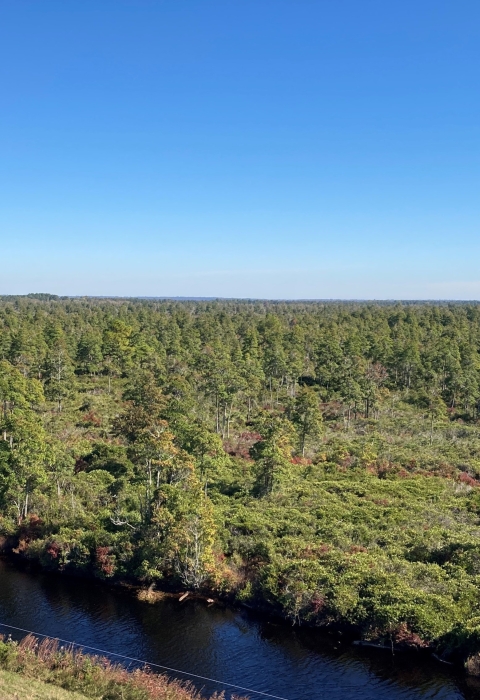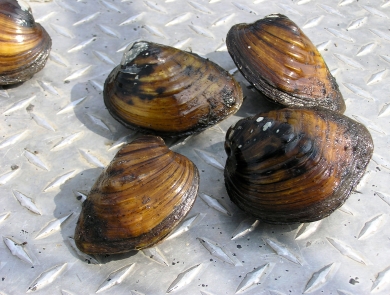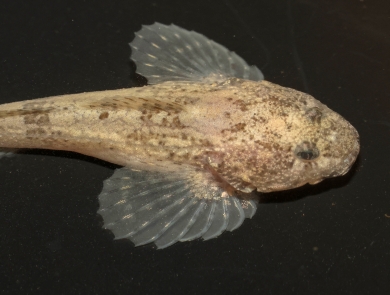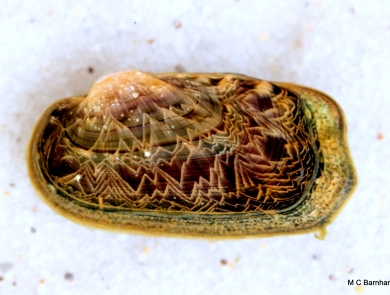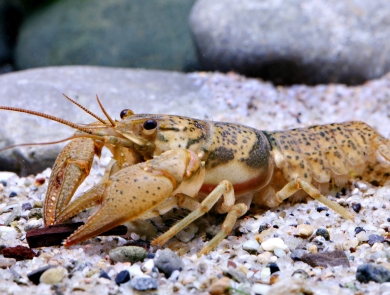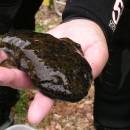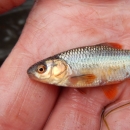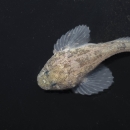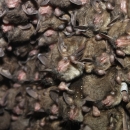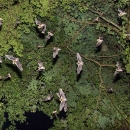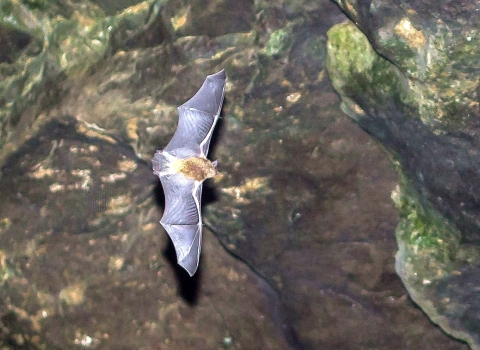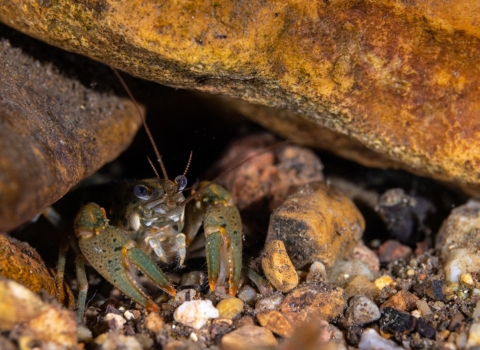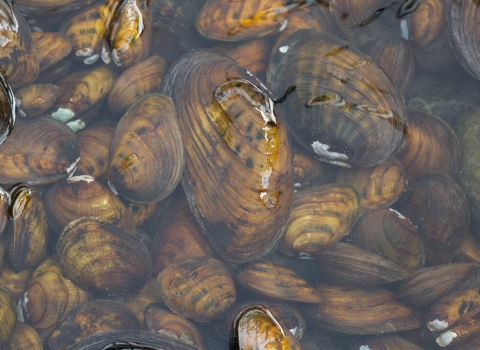Our Organization
Our Species
Our office works to conserve declining species and recover threatened and endangered species and their habitats with a focus on imperiled bat and freshwater mussel species. Our office has also been actively involved with the conservation and recovery efforts of Topeka shiner, Niangua darter, grotto sculpin and Ozark hellbender, among others. We use the Endangered Species Act to preserve and protect important habitat that imperiled species depend upon for their survival. We also use the Natural Resource Damages Assessment and Restoration program to study and restore injured natural resources using funds obtained from parties responsible for the injury.
Projects and Research
Natural Resources Damage Assessment
The Missouri Field Office manages two very large mining sites, the Southeast Missouri Lead Mining District and Tri-State Mining District, that encompass multiple Superfund sites, thousands of acres of impacted land, and hundreds of miles of contaminated streams. The two mining districts make up the number one historic lead and zinc production areas in the nation, respectively. Managing these cases requires extensive coordination and collaboration with state partners, Department of the Interior Office of the Solicitor, U.S. EPA and the Department of Justice.
Outreach and Education
The Missouri Field office is dedicated to supporting conservation education across the state. Staff members often volunteer with partners at events to share the importance of conservation work, research, and partnerships. You can find our table at events such as Columbia Earth Day, Arrow Rock Birds, Bees and Blooms Festival, and many more. In 2023, the Missouri Field Office partnered with the U.S. Army Corps of Engineers to produce educational videos about bats, crayfish, and freshwater mussels. Those videos can be located in the Missouri Ecological Services Video Library.
Bats across North America are in decline, scientists across the globe strive to protect them. Our agency actively collaborates with federal, state and non-governmental partners to conserve and restore listed bat species. The full video series on bat conservation in Missouri can be accessed on YouTube.
Missouri's bats: flight to survival:...
There are more than 600 species of crayfish in the world, and about 400 in North America. Invasive species are negatively impacting ecosystems across the world, including crayfish habit Our agency actively collaborates federal, state and non-governmental partners to study and protect these aquatic invertebrates. The full video series on crayfish...
Freshwater mussels across the world, including Missouri, are increasingly threatened by habitat loss and degradation. Our agency actively collaborates with federal, state and non-governmental partners to study and protect these essential species. The full video series on freshwater mussel conservation in Missouri can be found on Youtube
...Get Involved
Our office frequently partners with schools, public and private conservation organizations, as well as local community leaders and national wildlife refuges to communicate our conservation mission and opportunities throughout the state of Missouri. We also work with these groups to develop projects, such as survey methods training, that may benefit at-risk as well as other important fish and wildlife species and their habitats.
